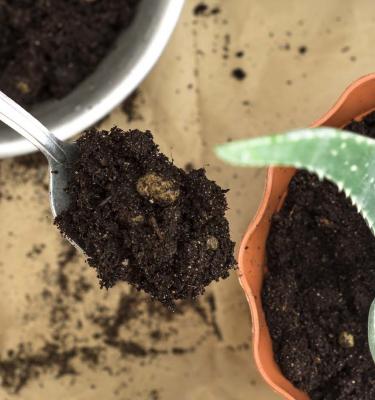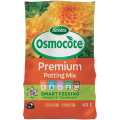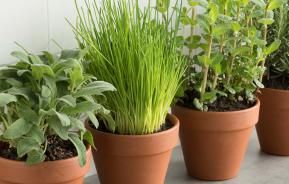Why is repotting so necessary?
Plants growing in pots from the very small (50mm diameter) to very large (half wine barrels or planter boxes) have a finite quantity of potting mix around their roots.
Potting mix is made from composted bark. The composting process doesn't stop when the mix is bagged for sale - it is a continuing process which results in the mix eventually breaking down completely.
The symptoms of a potting mix being past its useful life include:
- Water running straight through the pot and out the drain holes.
- Plants wilting quickly.
- Plants showing signs of yellowing and little or no growth.
 How often should I repot?
How often should I repot?
The frequency of repotting will be influenced by the quality of the potting mix that:
- Was in the pot when you bought the plant, or;
- You used last time you repotted it.
Over time, the level of the mix in the pot will drop ('slump') because the mix has broken down to such an extent that it has washed out the drainage holes or has compacted to become a solid mass.
If you use a premium mix, this may take two or three years due to the high quality of the raw ingredients it's made from.
Top tip
We recommend repotting or topping up* at least every two years with a quality potting mix to ensure your plants have the best growing conditions and nutrition you can provide.
* Large containers and barrels that are physically too large and heavy for a complete repot may be topped up with fresh mix every year or so, to bring the mix back to its original level and replenish the nutrients in older mix.
 What happens if I don't repot?
What happens if I don't repot?
If you don't repot when plants need it, you run the very real risk of plants becoming pot bound - they outgrow their existing pots. Their roots may completely fill pots, displacing the potting mix and depriving them of water and nutrients. Pot bound plants will struggle to survive.
Some plants are very vigorous and may outgrow their pots in just a few months. These fast growers may be moved into pots one or two sizes larger than you would normally use, to cater for their rapid growth and reduce the number of times you have to disturb their roots over a growing season (spring to autumn).
Plants may also become pot bound because you've forgotten about them for a few years, noticing them only when they are showing signs of decline. They are likely to have exhausted all of the available mix and nutrients and their roots will completely fill the pot, may be even growing out through the drain holes around the base.
You have a reasonable chance of saving them by repotting into larger pots and fresh mix, and then lavishing them with some TLC for a few weeks!
Top tip
After repotting, make sure to water plants thoroughly to 'settle' the mix, removing air pockets and ensuring it is thoroughly wet. To help plants overcome the trauma of being disturbed, add Scotts Performance Naturals All Purpose Liquid Fertiliser to the water.
 Tricks & advice
Tricks & advice
- Check there are adequate drain holes in and around the base of pots before using them.
- If you use premium quality potting mix, you won't need to add a layer of stones in the bottom of pots to improve drainage. Quality mixes drain well without it
- Always use fresh potting mix to give your plants the best possible conditions.
- Pots that stay too wet after watering may need to have drain holes enlarged - use a heated craft knife on plastic pots or a small tack hammer for ceramic/clay pots.











